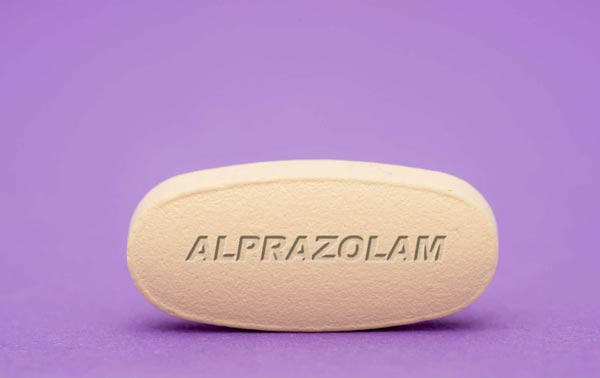Table of Contents
Key Points
- Fentanyl is an extremely strong, synthetic opioid painkiller that works by binding to the opioid receptors in the brain
- Due to the intense euphoric effects, fentanyl has a high abuse potential
- Withdrawal symptoms of fentanyl can be intense and cause extreme discomfort in those who are addicted to the medication
- Help is available for those with a fentanyl addiction
What Is Fentanyl and How Does It Work?
Fentanyl is 100 times stronger[1] than morphine and 50 times stronger than heroin.[1] Its purpose is to reduce severe pain. It is often used to help people recovering from surgery, and it may sometimes be used to treat those with painful health conditions, such as AIDS or cancer. In the hospital, this drug is often administered as an injection.
This allows the drug to work immediately because it bypasses the stomach and liver. Because blood travels so fast, it only takes a few seconds for the injected drug to reach the brain and enact its effects. It is an opioid agonist, meaning it binds to the opioid receptors in the brain to cause its effects.
This is also how the drug targets the brain’s pleasure center. Taking large doses of fentanyl will cause an intense feeling of euphoria. This will make a person feel happy and giddy. It will also reduce or eliminate physical pain from the person’s body temporarily. Some of the most common commercial brands for fentanyl include Duragesic® (patch), Actiq® (oral lozenge), and Sublimaze® (intravascular and intramuscular injection).
Besides injections, medical fentanyl is also available as skin patches and lozenges. Illegal fentanyl is considerably more dangerous because it is mixed with ingredients that are not meant to be consumed by humans, such as battery acid, drain cleaner, and rat poison.
Because fentanyl is so powerful, many may become addicted after using it once or twice. Some may start taking fentanyl to help with their pain, but they may soon find themselves dependent on the drug. Without it, it may feel like they can’t function properly, or they may experience very unpleasant withdrawal symptoms.
What Are Fentanyl Withdrawal Symptoms?
Physical Withdrawal Symptoms
- Body aches and muscle pain: Individuals may experience generalized body aches and muscle pain, often described as flu-like symptoms.
- Sweating and chills: Profuse sweating and sudden episodes of chills are common during fentanyl withdrawal.
- Nausea and vomiting: Many people going through withdrawal may experience bouts of nausea and vomiting.
- Diarrhea: Digestive disturbances, such as diarrhea, are frequent withdrawal symptoms, contributing to fluid and electrolyte imbalances.
- Abdominal cramps: Intense abdominal cramps and discomfort are reported by individuals during fentanyl withdrawal.
- Rapid heartbeat: Withdrawal from fentanyl can lead to an increased heart rate, contributing to feelings of palpitations and anxiety.
- Increased blood pressure: Blood pressure levels may rise during withdrawal, causing hypertension and related symptoms.
- Dilated pupils: Withdrawal often results in dilated pupils, making them larger than usual.
- Goosebumps: Many individuals experience goosebumps, also known as piloerection, as a physical manifestation of fentanyl withdrawal.
- Insomnia or disrupted sleep patterns: Sleep disturbances are common, and individuals may struggle with insomnia or have disrupted sleep patterns.
- Fatigue and weakness: Withdrawal from fentanyl can lead to extreme fatigue and weakness, making it difficult to engage in daily activities.
It is crucial that an individual with a fentanyl addiction detox under medical supervision to minimize the risk for potentially fatal symptoms.
Psychological Withdrawal Symptoms
- Anxiety and restlessness: Feelings of anxiety and restlessness are prevalent during fentanyl withdrawal, often accompanied by a sense of unease.
- Irritability and mood swings: Individuals may become easily irritated and experience sudden mood swings during the withdrawal process.
- Depression: Symptoms of depression, including feelings of sadness, hopelessness, and loss of interest, may arise during fentanyl withdrawal.
- Agitation and irritability: Agitation and irritability are common psychological symptoms, and individuals may feel easily agitated or provoked.
- Intense drug cravings: Strong cravings for fentanyl are a hallmark of withdrawal and can be overwhelming for individuals seeking recovery.
- Difficulty concentrating or focusing: Concentration difficulties and an inability to focus on tasks may arise during withdrawal.
- Increased sensitivity to stimuli: Individuals may become more sensitive to light, sound, and other environmental stimuli during fentanyl withdrawal.
- Poor appetite or changes in appetite: Appetite changes, such as decreased or increased appetite, can occur during withdrawal.
- Lack of motivation or enthusiasm: A sense of apathy, lack of motivation, and reduced enthusiasm for activities may be experienced.
- Emotional instability: Emotional instability and heightened emotional reactivity, including mood swings and emotional outbursts, can occur during withdrawal.
Behavioral Withdrawal Symptoms
- Social withdrawal and isolation: Individuals may withdraw from social interactions and isolate themselves from friends, family, and support networks.
- Loss of interest in previously enjoyed activities: Withdrawal from fentanyl can result in a diminished interest in hobbies and activities that were once pleasurable.
- Impaired judgment and decision-making: During withdrawal, individuals may experience impaired judgment and have difficulty making sound decisions.
- Engaging in risky behaviors to obtain fentanyl: Some individuals may engage in risky behaviors, such as illegal activities or seeking out other opioids, to obtain fentanyl during withdrawal.
- Financial difficulties due to spending on drugs: Withdrawal can lead to financial strain as individuals may spend a significant amount of money to acquire fentanyl or other substances.
- Neglecting responsibilities at work, school, or home: Withdrawal symptoms can interfere with daily responsibilities and result in neglect of work, school, or self-care
- Relationship problems: The strain of withdrawal symptoms can lead to conflict and strain in personal relationships, including difficulties in communication and emotional support.
- Changes in social interactions and relationships: The withdrawal process may lead to changes in social dynamics, with individuals distancing themselves from previous social circles or forming new relationships with others who use drugs.
- Secretive behavior or lying about drug use: Individuals may engage in secretive behavior, such as hiding their drug use or lying about their addiction, in order to maintain their access to fentanyl or avoid judgment from others.
Should You Stop Taking Fentanyl Cold Turkey?

Abruptly stopping the use of fentanyl, also known as going cold turkey, can be very dangerous and may lead to permanent physical damage or death. An individual who is addicted to fentanyl should undergo detox, but this should not be done alone.
Many people addicted to fentanyl think that they can go through withdrawal symptoms without any help, but this can also create a dangerous situation and increase risk of relapse, overdose, and death.
Detoxing at a professional drug treatment center is a far better option.
How Long Do Fentanyl Withdrawal Symptoms Last?
The onset of these withdrawal symptoms will be between 8 and 48 hours from the last use, and the withdrawal process can last as long as 20 days.[2]
Can You Overdose on Fentanyl?
In 2021, more than 70,000 people overdosed[3] on synthetic opioids, and most of them involved fentanyl.[3] You don’t need very large doses to experience dangerous or fatal effects.
Those who are experiencing withdrawal symptoms are at an increased risk of overdose due to intense cravings and impaired judgment.
Frequently Asked Questions About Fentanyl
Answers to some of the most common questions about fentanyl.
The Heights Treatment Editorial Guidelines
There is a vast amount of misinformation online especially as it relates to health & wellness. We have made it our mission at The Heights Treatment to provide accurate, medically sound content that has been medically reviewed by a doctorate level clinician so that you can trust the information contained within our website.





